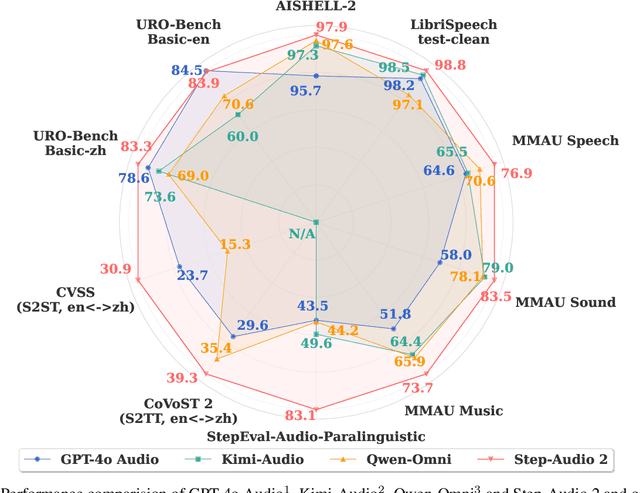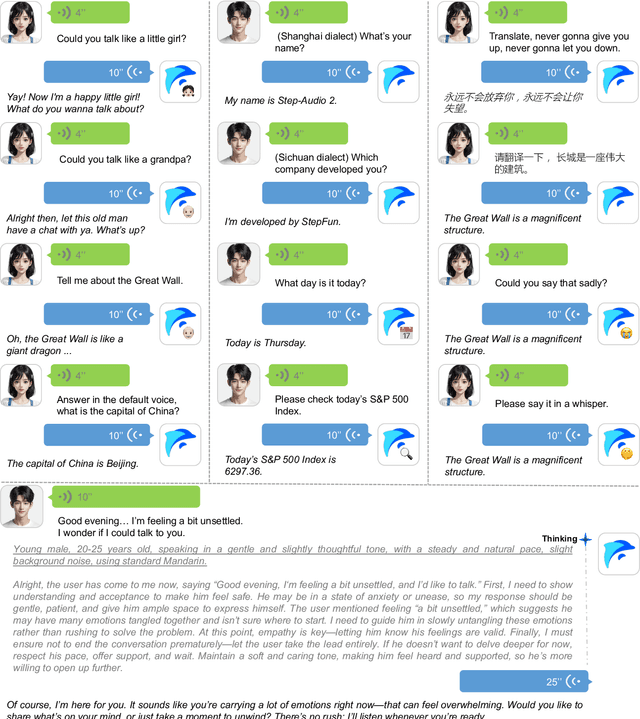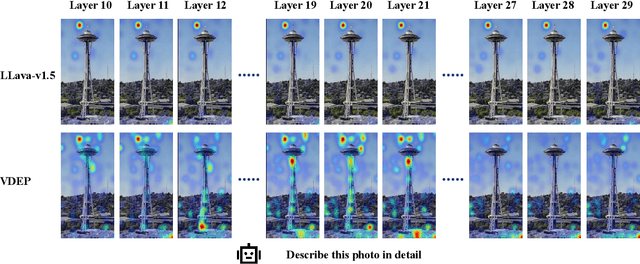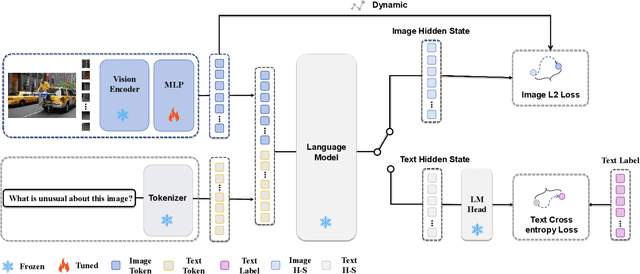Mingxiao Li
RLVMR: Reinforcement Learning with Verifiable Meta-Reasoning Rewards for Robust Long-Horizon Agents
Jul 30, 2025



Abstract:The development of autonomous agents for complex, long-horizon tasks is a central goal in AI. However, dominant training paradigms face a critical limitation: reinforcement learning (RL) methods that optimize solely for final task success often reinforce flawed or inefficient reasoning paths, a problem we term inefficient exploration. This leads to agents that are brittle and fail to generalize, as they learn to find solutions without learning how to reason coherently. To address this, we introduce RLVMR, a novel framework that integrates dense, process-level supervision into end-to-end RL by rewarding verifiable, meta-reasoning behaviors. RLVMR equips an agent to explicitly tag its cognitive steps, such as planning, exploration, and reflection, and provides programmatic, rule-based rewards for actions that contribute to effective problem-solving. These process-centric rewards are combined with the final outcome signal and optimized using a critic-free policy gradient method. On the challenging ALFWorld and ScienceWorld benchmarks, RLVMR achieves new state-of-the-art results, with our 7B model reaching an 83.6% success rate on the most difficult unseen task split. Our analysis confirms these gains stem from improved reasoning quality, including significant reductions in redundant actions and enhanced error recovery, leading to more robust, efficient, and interpretable agents.
Step-Audio 2 Technical Report
Jul 24, 2025



Abstract:This paper presents Step-Audio 2, an end-to-end multi-modal large language model designed for industry-strength audio understanding and speech conversation. By integrating a latent audio encoder and reasoning-centric reinforcement learning (RL), Step-Audio 2 achieves promising performance in automatic speech recognition (ASR) and audio understanding. To facilitate genuine end-to-end speech conversation, Step-Audio 2 incorporates the generation of discrete audio tokens into language modeling, significantly enhancing its responsiveness to paralinguistic information such as speaking styles and emotions. To effectively leverage the rich textual and acoustic knowledge in real-world data, Step-Audio 2 integrates retrieval-augmented generation (RAG) and is able to call external tools such as web search to mitigate hallucination and audio search to switch timbres. Trained on millions of hours of speech and audio data, Step-Audio 2 delivers intelligence and expressiveness across diverse conversational scenarios. Evaluation results demonstrate that Step-Audio 2 achieves state-of-the-art performance on various audio understanding and conversational benchmarks compared to other open-source and commercial solutions. Please visit https://github.com/stepfun-ai/Step-Audio2 for more information.
Mitigating Negative Interference in Multilingual Sequential Knowledge Editing through Null-Space Constraints
Jun 12, 2025Abstract:Efficiently updating multilingual knowledge in large language models (LLMs), while preserving consistent factual representations across languages, remains a long-standing and unresolved challenge. While deploying separate editing systems for each language might seem viable, this approach incurs substantial costs due to the need to manage multiple models. A more efficient solution involves integrating knowledge updates across all languages into a unified model. However, performing sequential edits across languages often leads to destructive parameter interference, significantly degrading multilingual generalization and the accuracy of injected knowledge. To address this challenge, we propose LangEdit, a novel null-space constrained framework designed to precisely isolate language-specific knowledge updates. The core innovation of LangEdit lies in its ability to project parameter updates for each language onto the orthogonal complement of previous updated subspaces. This approach mathematically guarantees update independence while preserving multilingual generalization capabilities. We conduct a comprehensive evaluation across three model architectures, six languages, and four downstream tasks, demonstrating that LangEdit effectively mitigates parameter interference and outperforms existing state-of-the-art editing methods. Our results highlight its potential for enabling efficient and accurate multilingual knowledge updates in LLMs. The code is available at https://github.com/VRCMF/LangEdit.git.
Consistent Story Generation with Asymmetry Zigzag Sampling
Jun 12, 2025Abstract:Text-to-image generation models have made significant progress in producing high-quality images from textual descriptions, yet they continue to struggle with maintaining subject consistency across multiple images, a fundamental requirement for visual storytelling. Existing methods attempt to address this by either fine-tuning models on large-scale story visualization datasets, which is resource-intensive, or by using training-free techniques that share information across generations, which still yield limited success. In this paper, we introduce a novel training-free sampling strategy called Zigzag Sampling with Asymmetric Prompts and Visual Sharing to enhance subject consistency in visual story generation. Our approach proposes a zigzag sampling mechanism that alternates between asymmetric prompting to retain subject characteristics, while a visual sharing module transfers visual cues across generated images to %further enforce consistency. Experimental results, based on both quantitative metrics and qualitative evaluations, demonstrate that our method significantly outperforms previous approaches in generating coherent and consistent visual stories. The code is available at https://github.com/Mingxiao-Li/Asymmetry-Zigzag-StoryDiffusion.
VISTA: Enhancing Vision-Text Alignment in MLLMs via Cross-Modal Mutual Information Maximization
May 19, 2025Abstract:Current multimodal large language models (MLLMs) face a critical challenge in modality alignment, often exhibiting a bias towards textual information at the expense of other modalities like vision. This paper conducts a systematic information-theoretic analysis of the widely used cross-entropy loss in MLLMs, uncovering its implicit alignment objective. Our theoretical investigation reveals that this implicit objective has inherent limitations, leading to a degradation of cross-modal alignment as text sequence length increases, thereby hindering effective multimodal information fusion. To overcome these drawbacks, we propose Vision-Text Alignment (VISTA), a novel approach guided by our theoretical insights. VISTA introduces an explicit alignment objective designed to maximize cross-modal mutual information, preventing the degradation of visual alignment. Notably, VISTA enhances the visual understanding capabilities of existing MLLMs without requiring any additional trainable modules or extra training data, making it both efficient and practical. Our method significantly outperforms baseline models across more than a dozen benchmark datasets, including VQAv2, MMStar, and MME, paving the way for new directions in MLLM modal alignment research.
Towards More Accurate Personalized Image Generation: Addressing Overfitting and Evaluation Bias
Mar 09, 2025Abstract:Personalized image generation via text prompts has great potential to improve daily life and professional work by facilitating the creation of customized visual content. The aim of image personalization is to create images based on a user-provided subject while maintaining both consistency of the subject and flexibility to accommodate various textual descriptions of that subject. However, current methods face challenges in ensuring fidelity to the text prompt while not overfitting to the training data. In this work, we introduce a novel training pipeline that incorporates an attractor to filter out distractions in training images, allowing the model to focus on learning an effective representation of the personalized subject. Moreover, current evaluation methods struggle due to the lack of a dedicated test set. The evaluation set-up typically relies on the training data of the personalization task to compute text-image and image-image similarity scores, which, while useful, tend to overestimate performance. Although human evaluations are commonly used as an alternative, they often suffer from bias and inconsistency. To address these issues, we curate a diverse and high-quality test set with well-designed prompts. With this new benchmark, automatic evaluation metrics can reliably assess model performance
On a Connection Between Imitation Learning and RLHF
Mar 07, 2025Abstract:This work studies the alignment of large language models with preference data from an imitation learning perspective. We establish a close theoretical connection between reinforcement learning from human feedback RLHF and imitation learning (IL), revealing that RLHF implicitly performs imitation learning on the preference data distribution. Building on this connection, we propose DIL, a principled framework that directly optimizes the imitation learning objective. DIL provides a unified imitation learning perspective on alignment, encompassing existing alignment algorithms as special cases while naturally introducing new variants. By bridging IL and RLHF, DIL offers new insights into alignment with RLHF. Extensive experiments demonstrate that DIL outperforms existing methods on various challenging benchmarks.
Step-Audio: Unified Understanding and Generation in Intelligent Speech Interaction
Feb 18, 2025Abstract:Real-time speech interaction, serving as a fundamental interface for human-machine collaboration, holds immense potential. However, current open-source models face limitations such as high costs in voice data collection, weakness in dynamic control, and limited intelligence. To address these challenges, this paper introduces Step-Audio, the first production-ready open-source solution. Key contributions include: 1) a 130B-parameter unified speech-text multi-modal model that achieves unified understanding and generation, with the Step-Audio-Chat version open-sourced; 2) a generative speech data engine that establishes an affordable voice cloning framework and produces the open-sourced lightweight Step-Audio-TTS-3B model through distillation; 3) an instruction-driven fine control system enabling dynamic adjustments across dialects, emotions, singing, and RAP; 4) an enhanced cognitive architecture augmented with tool calling and role-playing abilities to manage complex tasks effectively. Based on our new StepEval-Audio-360 evaluation benchmark, Step-Audio achieves state-of-the-art performance in human evaluations, especially in terms of instruction following. On open-source benchmarks like LLaMA Question, shows 9.3% average performance improvement, demonstrating our commitment to advancing the development of open-source multi-modal language technologies. Our code and models are available at https://github.com/stepfun-ai/Step-Audio.
From Visuals to Vocabulary: Establishing Equivalence Between Image and Text Token Through Autoregressive Pre-training in MLLMs
Feb 13, 2025



Abstract:While MLLMs perform well on perceptual tasks, they lack precise multimodal alignment, limiting performance. To address this challenge, we propose Vision Dynamic Embedding-Guided Pretraining (VDEP), a hybrid autoregressive training paradigm for MLLMs. Utilizing dynamic embeddings from the MLP following the visual encoder, this approach supervises image hidden states and integrates image tokens into autoregressive training. Existing MLLMs primarily focused on recovering information from textual inputs, often neglecting the effective processing of image data. In contrast, the key improvement of this work is the reinterpretation of multimodal alignment as a process of recovering information from input data, with particular emphasis on reconstructing detailed visual features.The proposed method seamlessly integrates into standard models without architectural changes. Experiments on 13 benchmarks show VDEP outperforms baselines, surpassing existing methods.
SimPER: A Minimalist Approach to Preference Alignment without Hyperparameters
Feb 04, 2025



Abstract:Existing preference optimization objectives for language model alignment require additional hyperparameters that must be extensively tuned to achieve optimal performance, increasing both the complexity and time required for fine-tuning large language models. In this paper, we propose a simple yet effective hyperparameter-free preference optimization algorithm for alignment. We observe that promising performance can be achieved simply by optimizing inverse perplexity, which is calculated as the inverse of the exponentiated average log-likelihood of the chosen and rejected responses in the preference dataset. The resulting simple learning objective, SimPER, is easy to implement and eliminates the need for expensive hyperparameter tuning and a reference model, making it both computationally and memory efficient. Extensive experiments on widely used real-world benchmarks, including MT-Bench, AlpacaEval 2, and 10 key benchmarks of the Open LLM Leaderboard with 5 base models, demonstrate that SimPER consistently and significantly outperforms existing approaches-even without any hyperparameters or a reference model . For example, despite its simplicity, SimPER outperforms state-of-the-art methods by up to 5.7 points on AlpacaEval 2 and achieves the highest average ranking across 10 benchmarks on the Open LLM Leaderboard. The source code for SimPER is publicly available at: https://github.com/tengxiao1/SimPER.
 Add to Chrome
Add to Chrome Add to Firefox
Add to Firefox Add to Edge
Add to Edge